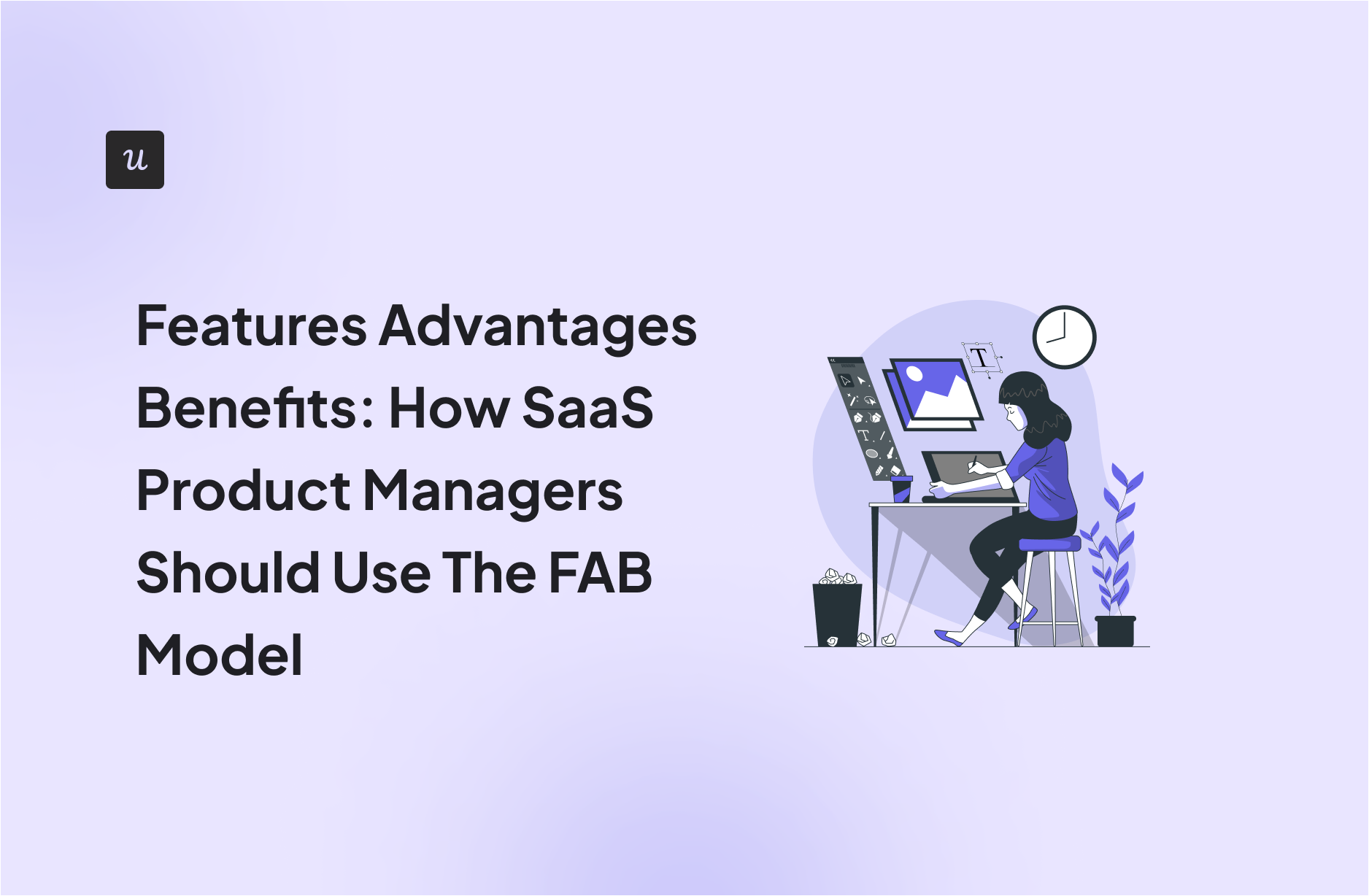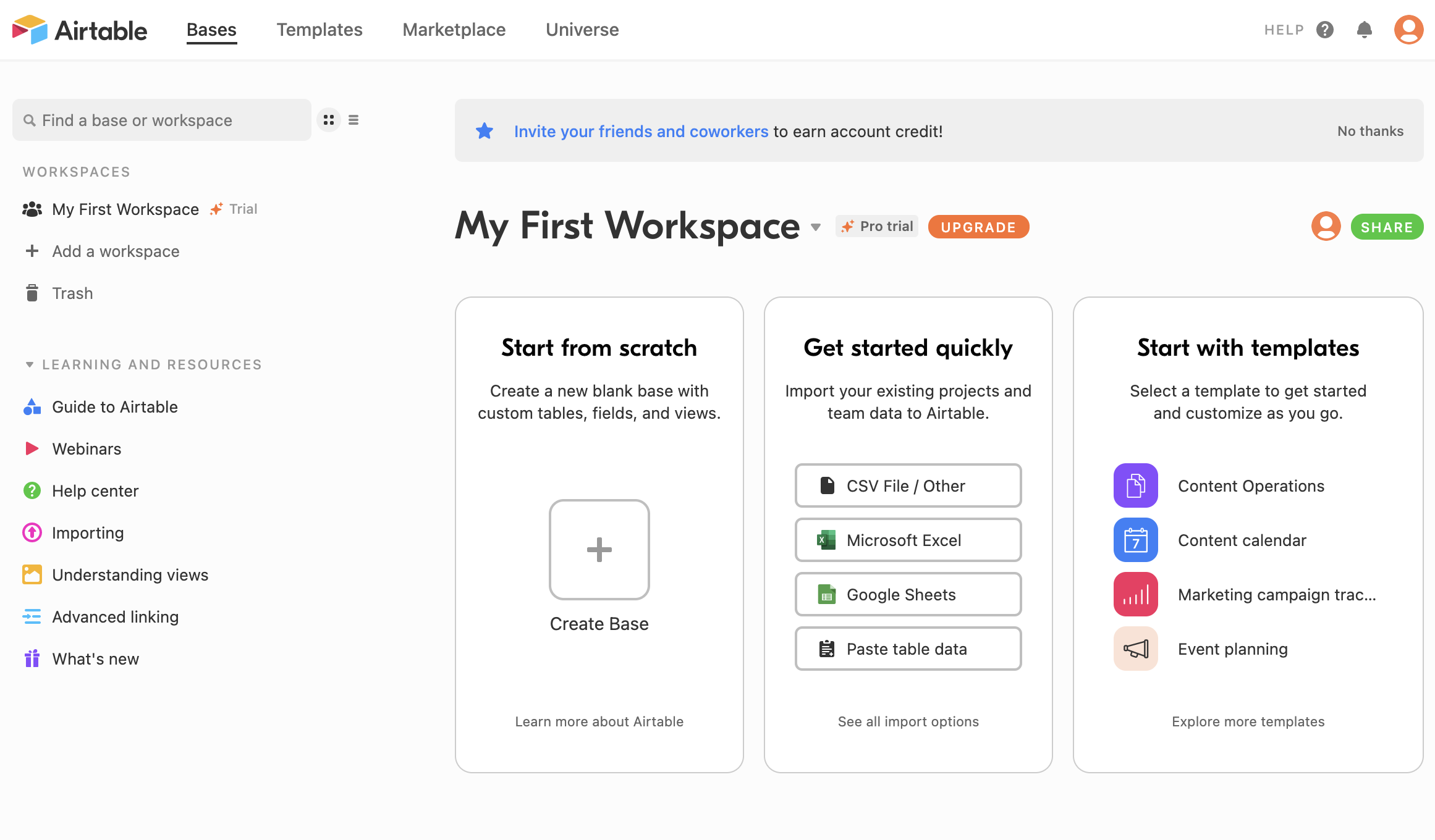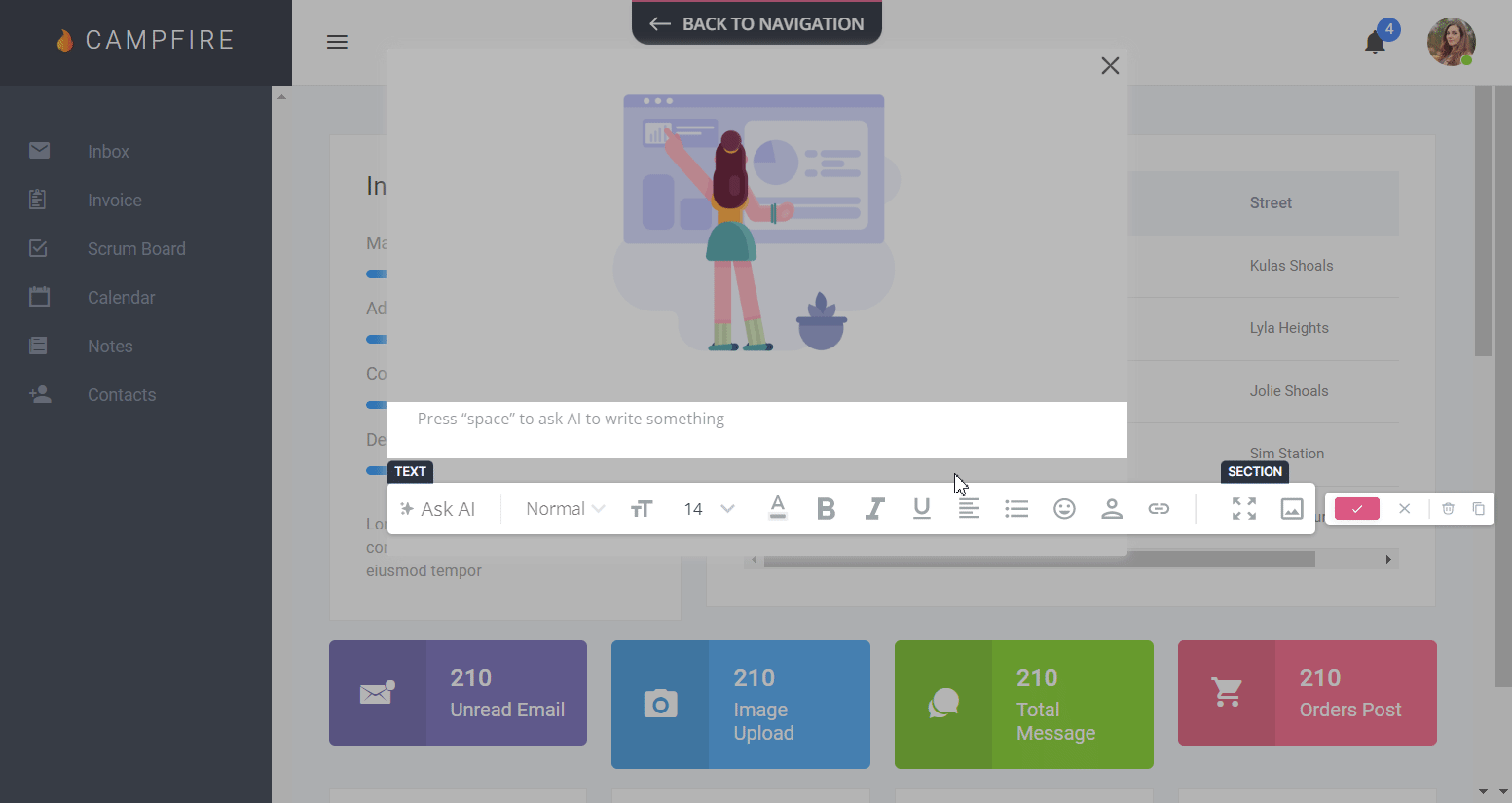
Features Advantages Benefits: How SaaS Product Managers Should Use The FAB Model
If you are a SaaS product manager, the chances are you’ve already heard of the Features Advantages Benefits (FAB) model.
You may be wondering how product managers can use them to develop their services.
If you’re after the answers to these questions, you’re in the right place!
Are you ready to jump it? Let’s get to it!
Get The Insights!
The fastest way to learn about Product Growth, Management & Trends.
Features, advantages, benefits summary
- A feature analysis benefits analysis explores the interactions between features, advantages, and benefits of a product.
- A FAB statement is a kind of sales message that promotes the features, advantages, and benefits of a product to the customers.
- Features are the characteristics of the product.
- An advantage is how the feature helps your customer.
- The product’s benefits refer to what the user gains from using it as well as how it’s better than its competitors.
- Benefits are the outcomes of using features. Product managers should focus on delivering benefits rather than just features and track how people interact with different features.
- The FAB model helps product teams write compelling product descriptions. Such descriptions are important not only to sell the product but also to set the right expectations and avoid the value gap.
- From the user’s perspective, clear FAB statements help identify the most appropriate functions to use, which reduces time to value.
- Identifying the links between features, advantages, and benefits also helps to differentiate the product for different target markets.
- Product managers who use the FAB model find it easier to prioritize features for development and avoid falling into the build trap.
- To deliver the right benefits to the right users, divide them into segments.
- Next, use tooltips and other in-app guidance to highlight the relevant features for each user segment.
- Qualitative feedback is a good source of language you can later use to describe your product features, advantages, and benefits to other users.
- Userpilot FAB model example: features include product usage analytics, in-app flows, and the resource center widget. They are used to track user engagement and design contextual in-app guidance, and in-app self-service solutions. Thanks to these, you can improve product adoption, reduce support costs, and improve customer satisfaction.
- Want to see Userpilot in action and implement your FAB model with it? Book the demo and our team will show you how.
What is the features, advantages, and benefits (FAB) analysis in product management
FAB analysis is a technique used to understand and communicate the value of a product by breaking down its attributes into three categories: Features, Advantages, and Benefits.
In this framework, the goal is to define what is key in the interaction of the three elements. In other words, this framework explores questions such as “What are the advantages of the features?” and ” How do the advantages translate into the benefits?”.
What is an FAB statement in PM?
The FAB statement communicates the features, advantages, and benefits to the users.
Normally, you can find FAB statements in sales copy and marketing campaigns, and their main objective is to attract and convert users.
That’s why writing compelling FAB statements is crucial.
Rather than just stating the obvious, they need to captivate the imagination of the potential customers and make them reach for the credit card.
What are the features of the FAB analysis framework?
Features are basically the characteristics of the product. It’s what it does and what it looks like.
In a smartphone, a feature would be the camera.
In a SaaS product, it would be the functionality that it offers. For example, for a product growth tool like Userpilot, it could be in-app surveys.
What are the advantages of the FAB model?
The advantages are how the product helps the user. It elaborates on the description of a feature, explaining how the feature can help users accomplish something valuable for them.
For example, the camera feature in the phone allows the user to take pictures.
For Userpilot, in-app surveys allow users to collect user insights.
What are the benefits of the FAB model?
Benefits are what the user gains from using the product.
A benefit of a smartphone camera would be that you don’t need to carry a camera with you to take quality pictures.
Listing the benefits on their own may not be very convincing. That’s why the benefit statement should always link them back to the advantages of specific features.
What’s important is that different user personas may get different benefits from each of the advantages or features.
Features vs benefits: What is the difference?
Features are easy to identify, name, and describe in an objective way. It’s simply the functionality and the looks of the product.
In contrast, benefits describe why an audience should care about the features. In most cases, customers buy products because of their real benefits rather than their features.
Don’t get me wrong though.
Shopping is an emotional process and presenting features in a clever way may prove effective, too. However, the impact is hardly ever long-lasting and such features lose traction and die sooner or later.
Consequently, if you genuinely care about your customers and want to establish long-term relationships, you should focus on selling benefits, not features.
How the FAB model can help product managers?
Here are a few important advantages and benefits of using the FAB model for product management.
1. Features and benefits help in writing product descriptions
In a way, the FAB model helps product managers bring the features to life. It’s much easier to describe features when you present them through the lenses of advantages and benefits.
What’s more, it sets the right expectations for the product and helps avoid the value gap. It gives the user a clear idea of what the product does and how it can help them achieve their objectives.
Mapping out the features, advantages, and benefits also reduces the time to value. That’s because when the users know how each feature can help them, they can choose the best ones to complete their jobs in the quickest possible way.
That’s exactly what Airtable does with the empty state message. Instead of talking about merely delving into feature specifics, it tells the user what actions can be performed with them.

2. Advantages help understand how various features can differentiate the product
Mapping out the feature advantages and benefits also helps to develop a consistent product differentiation strategy.
As mentioned before, different users in different markets have different needs.
The FAB analysis can help you identify how your product can satisfy the needs of each of these user segments.
This will allow your copywriters to draft compelling marketing messages that resonate with your target audiences in different markets.
3. The FAB analysis helps with feature prioritization
Establishing the links between features and the corresponding advantages and benefits helps with prioritization and backlog grooming.
When you see the key benefits of each feature and what jobs it helps users to do, it’s easier to decide which of them will deliver the most value and prioritize these features on the product roadmap.
Ultimately, this allows teams to better cater to customers’ needs.
Examples of benefits, features, and advantages of successful software products
How does the benefits, features, and advantages model work in practice? Let’s have a look at the FAB analysis of a few successful SaaS products.
Userpilot
Userpilot is a product adoption and onboarding platform.
Features:
The three main features of Userpilot are product analytics, in-app flows, and user feedback.
Advantages:
- The product usage analytics allow you to track user behavior and engagement in-app.
- The in-app flows feature enables to building of highly customized and contextual in-app experiences to engage and train users.
- The user feedback layer allows you to collect and analyze feedback.
Benefits:
Tracking user behavior in-app gives you actionable insights. You can use these to identify friction points in the user journey and product features for further improvement.
Once you have that knowledge, you can develop interactive in-app guidance to navigate the users through the stages where they get stuck, help them discover the product value and develop proficiency.
Similarly, the self-service resource center can help users develop their skills in using the product and deal with issues without contacting customer support. That’s how most users prefer to access help these days.
The overall result is increased product adoption, greater customer satisfaction, and reduced support costs.
Slack
Slack is a messaging and communication platform. The app has a ton of features, so we’re going to look into only a few of them.
Features:
- Slack enables teams to communicate via text messages, video calls, and audio ‘huddles’.
- Apart from direct messages, teams can set up channels. The channels are searchable.
- Slack also offers a high level of automation.
- Moreover, it offers integrations with other products your team might be using like Miro, Trello, or Salesforce.

Advantages:
- The key advantage of Slack is it that allows dispersed teams to choose the most suitable way to communicate in a particular situation. It also allows teams to cut down on meetings and emails.
- The search option allows team members to quickly find the information they need.
- The advantage of automation is that teams don’t have to set up recurring meetings or repetitive tasks like requests and approvals manually. Instead, they can create automated workflows.
- The integrations mean that teams are able to complete all their tasks within the same app without switching back and forth between various tools.
Benefits:
The main benefit of Slack is that it helps businesses save money and time. This is possible thanks to efficient communication and collaboration both in and across organizations.
What’s more, the automation frees up team members so that they can focus on activities that genuinely drive value.
Finally, the integrations allow Teams to start using Slack immediately and help them streamline their workflows for improved efficiency.
Dropbox
Dropbox is a cloud-based file-sharing application. Just like Slack, its functionality is very well developed, so why don’t we focus on the key features only?
Features:
The core functionality of Dropbox is file storage and backup.
In addition, Dropbox offers file recovery and version history functionality. Dropbox also supports 256-bit AES and SSL/TLS encryption.
Next, users can sync their data across different devices.
Finally, it has a desktop app as well as a mobile app that works on all major operating systems.

Advantages:
Dropbox allows users to store and share large amounts of data.
The advantage of high-level encryption is that your data is secure, while the file recovery and version history allow users to retrieve lost files or information easily.
The users can sync and access their files from a wide range of different devices.
Benefits:
The key benefit of Dropbox is the convenience that comes with cloud storage of large amounts of data without having to worry about physical drives. Being able to access your data from various devices makes it even more convenient.
File sharing and sync give you the certainty that you and your teammates are working with the same files.
Thanks to encryption, file recovery, and version history users are protected from serious financial and legal implications that could result from incidental data deletion or security breaches.
How can product managers use features, advantages, and benefits to drive product adoption?
Remember the Pareto rule? The 80/20 one? Basically, about 80% of the value comes from the top 20% of functionality. What’s more the majority of users only use 20% of the features.
How do you users find the 20% that they need?
Product managers can use the FAB model and a few tricks to help users experience value and drive adoption.
Segment your users to identify relevant features
If every user needed the same 20% of features, your life as a product manager would be very easy.
Unfortunately, different features matter to different users.
That’s why the first step is to group them into segments and map the relevant features.
Users can provide you with a lot of necessary data during the sign-up process. This may be enough to classify them into different groups and attribute relevant functionality.

Once you collect the necessary data with welcome surveys, group so you can better understand which persona benefits from which product’s features.
Use tooltips to highlight the benefits of specific features
Now that you have the features, advantages, and benefits mapped to specific user segments, use in-app messages to highlight the relevant features.
Tooltips are an easy and quick way to achieve that.
Remember, your goal with tooltips isn’t to merely describe the user and explain how to use it, it’s also important to convey the value proposition of the feature.

Leverage AI to refine your product messaging
Coming up with the right copy that encapsulates your product features, benefits, and advantages in one place isn’t easy. You’ll likely need to come up with dozens of versions and iterations until you can find the perfect copy.
To speed up the process and also get some help in the brainstorming process, leverage AI writing assistant that allow you to shorten, expand, or paraphrase the sentence according to your needs.
Collect user insights and improve your messaging based on it.
Qualitative feedback is priceless for two reasons.
First, it allows you to get a deeper understanding of user needs and feelings, and identify an area for improvement or a new feature to develop.
More importantly, qualitative feedback is literally the voice of the customer. It shows how customers talk about your product – what language they use and how they construct their arguments.
This is priceless when it comes to explaining the benefits of the product to prospective customers. Using customers’ language in the same way they would use it themselves allows you to better communicate the value and how to obtain it.

Conclusion
The features, advantages, and benefits model can help product managers prioritize features based on their value, improve differentiation, and present the product’s value in a convincing way.
If you’d like to learn how Userpilot can help you collect user data and improve user experience to drive adoption, book the demo!








